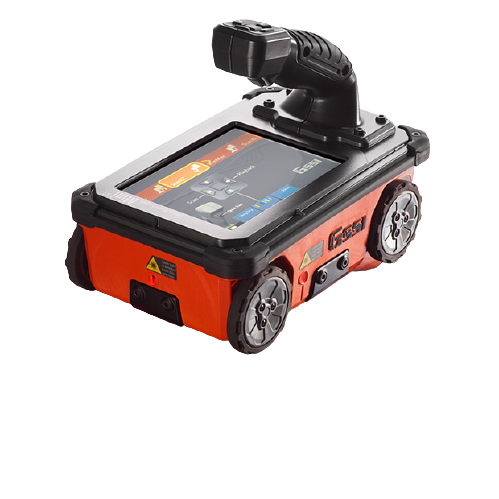Checking Out the Key Advantages of Concrete Scanning in Building And Construction Projects
In the world of contemporary building practices, the use of concrete scanning technology has actually arised as a crucial tool for making sure job performance and architectural honesty. From improving safety and security procedures to accurately identifying utilities hidden under the surface area, the benefits of concrete scanning are diverse. RainierGPR Concrete Scanning.
Enhanced Safety And Security Actions
Utilizing advanced concrete scanning innovation improves precaution on building websites by giving exact detection of prospective dangers concealed beneath the surface area. This technology makes it possible for building and construction groups to determine rebar, channels, post-tension cable televisions, and other obstructions before excavation or exploration, considerably reducing the threat of mishaps. By identifying these elements exactly, employees can stay clear of damaging critical structural components, therefore protecting against injuries, hold-ups, and expensive repairs.
Furthermore, concrete scanning plays an important function in ensuring the integrity of existing frameworks throughout remodellings or growths. By finding weak points, voids, or wear and tear within concrete aspects, designers can address these problems proactively, boosting the overall security and longevity of the structure. This aggressive strategy not just minimizes the risk of architectural failings yet additionally reduces the possibility for mishaps triggered by unpredicted architectural shortages.
Fundamentally, the execution of concrete scanning innovation works as a positive safety procedure that safeguards both building employees and the structural honesty of structures, inevitably adding to the total success and performance of building jobs. - RainierGPR Concrete Scanning
Accurate Discovery of Utilities
Concrete scanning innovation facilitates exact identification of below ground utilities, improving building website safety and security and efficiency. Precise detection of energies is important in building and construction jobs to prevent costly problems, job hold-ups, and most significantly, make sure the safety and security of workers and the public. By utilizing innovative scanning modern technologies such as ground-penetrating radar (GPR) and electro-magnetic induction, construction teams can draw up the location of hidden pipes, cords, and various other energies with high degrees of precision.

Time and Price Efficiency

Concrete scanning modern technology enables construction groups to accurately locate rebar, post-tension cords, and various other ingrained items within concrete structures. This specific info aids in preventing over here pricey blunders such as unintentional damage to critical components throughout exploration, reducing, or coring tasks. Furthermore, by recognizing prospective threats beforehand, the need for costly repair work or rework due to damages can be reduced, causing set you back savings for the task.

In addition, the capability to quickly and precisely find utilities below the surface area without causing any kind of damage not just saves time however additionally protects against expensive interruptions to existing framework. In general, the moment and cost efficiency benefits of concrete scanning make it an important device for improving building and construction job administration and implementation.
Conservation of Architectural Honesty
Maintaining the architectural stability of buildings and framework is paramount in making certain long-term security and security. Concrete scanning plays a critical function in this conservation process by permitting building and construction specialists to recognize potential hazards to the architectural honesty of a structure or infrastructure before they intensify into major issues. With using innovative scanning innovations such as ground-penetrating radar (GPR) and electromagnetic induction, building groups can non-invasively assess the problem of concrete structures, locate rebar, post-tension cables, and other embedded elements, and identify any type of gaps, splits, or wear and tear within the concrete.
Improved Job Planning
In order to make sure the effective execution of building jobs, careful attention to detail and extensive planning are crucial elements that come from a detailed understanding of the structural conditions recognized via concrete scanning. Boosted task preparation, facilitated by concrete scanning, allows construction groups to preemptively resolve possible challenges, allot sources extra effectively, and develop realistic timelines. By accurately determining the location of rebar, post-tension cords, and learn the facts here now various other embedded things within concrete structures, task managers can create more precise building and construction plans that lessen the risk of costly errors or delays. Additionally, the data gotten from concrete scanning enables stakeholders to make educated decisions relating to structural adjustments, improvements, or expansions, leading to smoother job shifts and improved overall task outcomes. Ultimately, including concrete scanning right into the task planning stage boosts control amongst employee, cultivates positive analytical, and adds to the effective distribution of building and construction tasks within budget plan and timetable restrictions.
Conclusion
Finally, concrete scanning uses countless advantages in building projects. By enhancing precaution, accurately detecting energies, enhancing time and cost performance, preserving structural stability, and aiding in project planning, concrete scanning proves to be a necessary tool for effective project execution. Its capacity to minimize risks, increase performance, and guarantee task honesty makes it a vital property for building experts.
In the realm of modern-day construction methods, the use of concrete scanning modern technology has actually emerged as a pivotal tool for guaranteeing task efficiency and structural integrity.Concrete scanning innovation allows building teams to precisely find rebar, post-tension cords, and various other ingrained things within concrete frameworks. Through the use of sophisticated scanning modern technologies such as ground-penetrating radar (GPR) and electro-magnetic induction, building and construction teams can non-invasively assess the problem of concrete frameworks, locate rebar, post-tension cable televisions, and various other embedded aspects, and identify any gaps, fractures, or damage within the concrete.
In order to make certain the effective implementation of construction tasks, precise interest to information and detailed planning why not find out more are important elements that stem from a thorough understanding of the structural conditions identified via concrete scanning. Ultimately, incorporating concrete scanning right into the task planning stage enhances sychronisation amongst group participants, fosters aggressive problem-solving, and adds to the successful distribution of building and construction tasks within spending plan and routine constraints.